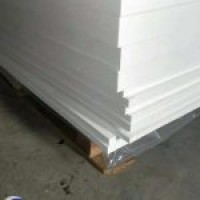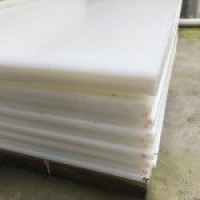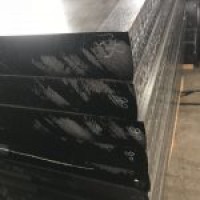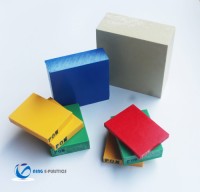-
 Rm.136,Lin he Zhong Rd. TianHe, Guangzhou, China.
Rm.136,Lin he Zhong Rd. TianHe, Guangzhou, China.
 Rm.136,Lin he Zhong Rd. TianHe, Guangzhou, China.
Rm.136,Lin he Zhong Rd. TianHe, Guangzhou, China.




 MOQ:
Default
MOQ:
Default
 Port:
Hangzhou
Port:
Hangzhou
 Packaging:
Customizable
Packaging:
Customizable
 Lead Time:
Default
Lead Time:
Default
 Size:
Default Size
Size:
Default Size
 Color:
Default Color
Color:
Default Color
Place of Origin: Guangzhou, China (Mainland)
Brand Name: Ninge
Model Number: plastic sheet
Material: heat resistant plastic sheet
Thickness: Customized
Size: Custom Size
Item: for heat resistant plastic sheet
free sample: available
Color: Black /white /red
Certificate: ISO9001
Feature: Eco-Friendly
Density: 1.5g/cm3
shape: Sheet
warranty: yes
Package: wooden box
Tensile Strength: Strong
POMC sheet :thickness :8-120M
Size:600*1200/1000*2000mm
Acetal Delrin Sheet
Acetal resins (polyoxymethylene or POM) are engineering thermoplastics based on formaldehyde polymerization technology. Acetal resins have high tensile strength, stiffness, resilience, fatigue endurance, a low coefficient of friction against metals, acetals and other plastics and moderate toughness. The Acetal sheet has high resistance to organic solvents, excellent dimensional stability, a low coefficient of friction and outstanding abrasion resistance among thermoplastics.
Acetals’ resistance to creep is excellent. Moisture, lubricants and solvents including gasoline and gasohol have little effect on this property, which is important in parts incorporating self-threading screws or interference fits. Good electrical properties qualify these materials for electrical applications requiring long-term stability. Acetal copolymers retain much of their toughness through a broad temperature range and are among the most creepresistant of the crystalline thermoplastics. A low moisture absorption characteristic permits molded parts to serve reliably in environments involving humidity variations.
POM sheet or poly oxy methylene (POM) is a name of popular plastics which are widely used in the engineering world. POM sheets are also known as acetal, polyacetal, and polyformaldehyde.
POM sheets and plates are counted among stiffest of all thermoplastics. They’re generally produced by different chemical firms with slightly different formulas such as; Ramtal, Delrin, Celcon, Duracon, Kepital, and Host form.
The POM sheets are divided into two types;
It has high chemical resistance, it regularly brings about less warm debasement while generation, and in the field.
The best features pf POM sheets are given below;
The few highlighting properties of POM sheets are;
| PROPERTIES | STANDARD | UNIT | RESULT |
| mechanical property | |||
| Density | ASTM D792 | g/cm3 | 1.43 |
| Tensile strength | ASTM D638 | Mpa | 100 |
| ultimate elongation | ASTM D638 | % | 10 |
| bending strength | ASTM 790 | Mpa | 150 |
| bending modulus | ASTM 790 | Mpa | 4500 |
| hardness | ASTM D2240 | D | 85 |
| Impact strength | ASTM D256 | J/M | 100 |
| Thermal properties | |||
| Melting poing | DSC | ℃ | 190 |
| working Temp. | ASTM D648 | ℃ | 140 |
| Permanent Temp. | – | ℃ | 120 |
| Short-period Temp. | – | ℃ | 150 |
| Pyroconductivity | DIN 52612-1 | W/(K-M) | 0.31 |
| dilatation coefficient | ASTM D696 | 10-5-1/K | 6 |
| electrical property | |||
| dielectric strength | ASTM D150 | KV-mm | 22 |
| dielectric loss coefficient | ASTM D150 | – | 0.005 |
| Volume resistance | ASTM D257 | Ω.cm | 1014 |
| surface resistance | ASTM D257 | Ω | 1016 |
| dielectric constant | ASTM D149 | – | 3.9 |
| Chemical properties | |||
| Water absorption | 23℃ 60%RH | % | 0.35 |
| Acid resistance | 23℃ 60%RH | + | |
| Alkali resistance | + | ||
| Resistance to acid and alkali water | + | ||
| Chloric acid alkali resistance | 0 | ||
| Resistant to aromatic compounds | + | ||
| The ketone resistance | 23℃ 60%RH | + | |
| Water resistance | 23℃ 60%RH | + | |
| Others properties | |||
| combustibility | UL 94 | HB | |
| paste | – | + | |
| Non-toxic harmless | EEC 90/128 FDA | + | |
| friction coefficient | DIN 53375 | – | |
| uvioresistant | – | 0 | |